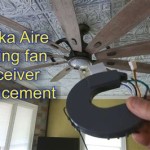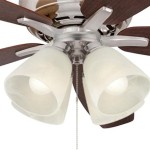Lighting Fixtures Ceiling Tiles: A Comprehensive Guide to Essential Aspects
Ceiling tiles, also known as suspended ceilings or drop ceilings, offer a multitude of advantages for commercial and industrial spaces. They not only enhance the overall aesthetics but also provide effective solutions for lighting, acoustics, and airflow management. Among the various types of ceiling tiles available, lighting fixtures ceiling tiles stand out as a versatile option that seamlessly integrates lighting into the ceiling grid.
Lighting fixtures ceiling tiles are designed with pre-installed lighting fixtures, typically fluorescent or LED, that provide ambient or task lighting. These tiles eliminate the need for separate light fixtures and ceiling panels, simplifying installation and creating a cohesive visual appearance. The lights can be recessed or flush-mounted, allowing for a wide range of lighting effects and design aesthetics.
One of the key advantages of lighting fixtures ceiling tiles is their flexibility in terms of light distribution and intensity. The tiles can be arranged in various configurations to achieve the desired lighting levels and create specific lighting zones. This customization allows for optimal lighting for different areas within a space, such as workstations, meeting rooms, or reception areas.
Another important consideration when choosing lighting fixtures ceiling tiles is the material and finish. Metal tiles, such as aluminum or steel, offer durability and resistance to corrosion. They come in a variety of finishes, including powder coating or paint, to match the décor of the space. Gypsum tiles, on the other hand, are lightweight and easy to install, but they may not be suitable for areas with high humidity or moisture.
The energy efficiency of lighting fixtures ceiling tiles is a crucial factor to consider, especially for large-scale commercial spaces. LED lighting fixtures are highly energy-efficient, consuming less electricity and lasting significantly longer than traditional fluorescent fixtures. By incorporating LED fixtures into ceiling tiles, businesses can reduce their energy consumption and operating costs.
Acoustics is another important aspect to consider when choosing ceiling tiles. Lighting fixtures ceiling tiles often feature sound-absorbing materials, such as mineral wool or fiberglass, which help reduce reverberation and noise levels within the space. This can enhance speech clarity and overall comfort, making these tiles ideal for offices, schools, and other environments where sound control is essential.
In addition to the essential aspects discussed above, lighting fixtures ceiling tiles can also offer additional features, such as built-in sensors for motion detection or daylight harvesting. These features can further enhance energy efficiency and provide greater control over the lighting environment. By carefully considering all these factors, businesses and designers can choose the optimal lighting fixtures ceiling tiles to meet their specific requirements and create functional, aesthetically pleasing, and energy-efficient spaces.

Lighting Ceilume

Lighting Ceilume

1 75 Linear Low Profile Led T Bar Grid Light Alcon Lighting 14030 20

Cambridge Direct Mount Ceiling Tiles White

Vonn T Grid Vtg21516fl35k 2 Ft Led Recessed Linear Lighting Fixture 15

Cyanlite Led Panel Light For Clip In Metal Ceiling

Replacing Drop Ceiling Tiles

Optix 23 75 In X 47 Clear Plastic Ceiling Light Panel 1420083a The Home Depot

Prismatic Light Diffuser Clear Frosted Transpa Plastic

Textured Look Ceilings 928 Armstrong Residential
Related Posts








